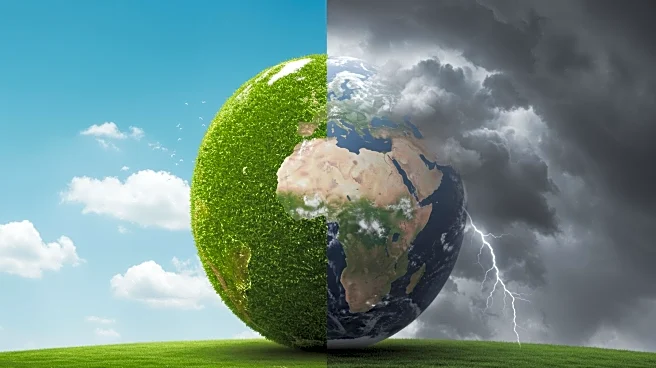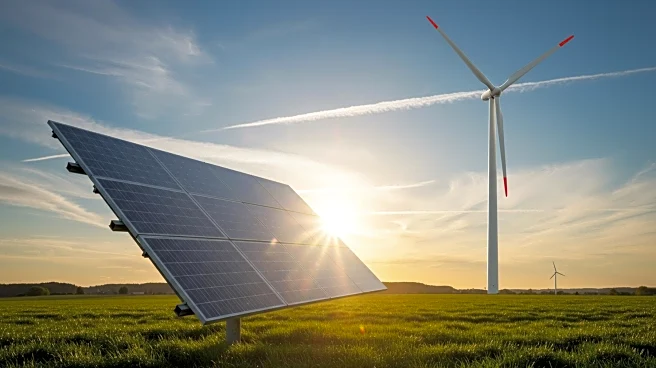What's Happening?
President Trump has imposed a 50% tariff on Indian imports, which experts suggest could be a pivotal moment for India to advance its green manufacturing initiatives. Despite potential disruptions to sectors such as textiles, steel, and aluminum, India remains committed to its climate goals, including a Net Zero target by 2070. The tariffs are seen as an opportunity for India to strengthen its production base and reduce logistics inefficiencies, potentially redirecting products meant for the U.S. to the domestic market. This shift could boost renewable energy deployment within India, leveraging its substantial domestic demand.
Why It's Important?
The imposition of tariffs by President Trump could have significant implications for India's economic and environmental strategies. While the tariffs may increase costs for clean technology and disrupt exports, they also present an opportunity for India to enhance its manufacturing capabilities and accelerate its transition to green energy. This development could position India as a key player in global renewable energy supply chains, particularly in sectors like electronics, biofuels, solar panels, and green steel. The tariffs may also prompt India to explore alternative markets, potentially strengthening its trade relationships with Europe, which is actively pursuing a net-zero agenda.
What's Next?
India faces the challenge of adapting to the European Union's Carbon Border Adjustment Mechanism (CBAM), which will impose a carbon tax on high CO2-emitting products like steel and aluminum starting January 2026. To counter this, India could develop zero- or low-carbon industrial zones, enhancing its competitiveness in the global market. The focus may shift from trade policy to manufacturing and production policy, emphasizing quality products to thrive in the new trade environment. Additionally, India could leverage the CBAM to its advantage by investing in green technologies, potentially gaining a long-term competitive edge.












